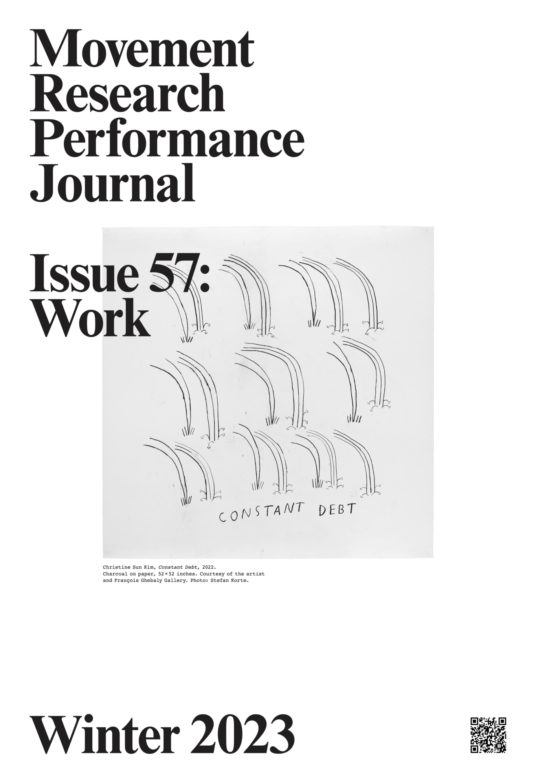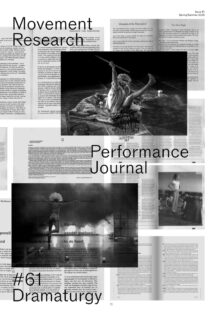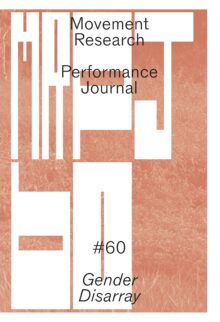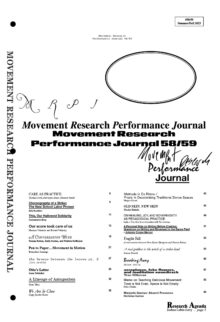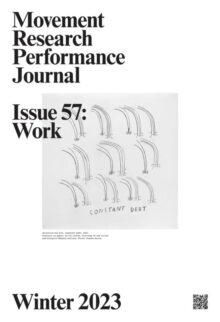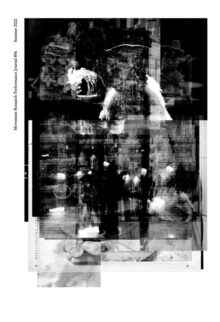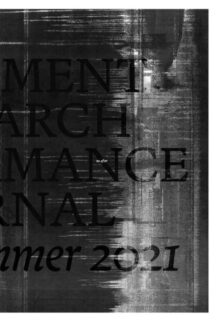Issue 57 of the Movement Research Performance Journal (MRPJ) takes up the keyword “work.” Given that Movement Research has a history of being an organization of artists laboring for and with one another, we invited contributors to consider, revise, or push against questions like: how are things working today? What is the condition of labor in the field of dance and performance? What does it mean to be or have a body that works, on which work is (or isn’t) projected? How do idealizations of the laboring body and/or the ethos of collective practice relate to or obscure the lived experience of making dance works, working in dance, or balancing artistic production with the productive demands of one’s so-called “survival job”? To work in dance (or the arts in general) is indisputably to be exploited. But the contributors to this issue both directly and obliquely take up the experience of working as both enervating and energizing (in often contradictory ways), and draw from their different experiences of working work’s uneven distribution across the globe, the abelism that belies work’s regimentation, and the on-going struggle to find solidarity among arts workers.
More than thematically linked, the issue’s three sections also reflect a desire to address how this publication itself asks artists to work. Artist-run since 1990, the burden of administering a publication like the MRPJ was (perhaps) once outweighed by the promise of what this kind of project could do to shape the field of dance and performance. Today, that editorial and administrative labor dovetails all too well with what has become naturalized as an expectation of practicing artists—that they write about what they are doing or want to do in grant applications, that they create content to be used both for educating and marketing to audiences, and that they develop a discourse that signifies the value of their work in relation to any number of fields other than dance.
For Issue 57, the MRPJ editorial team (Josh Lubin-Levy, John Arthur Peetz, and Nicole Bradbury) gave the keyword “work” to three artists designated as “Contributing Editors” (nora chipaumire, Jerron Herman, and Alex Rodabaugh). nora, Jerron, and Alex were each invited to invite three to five other participants to join the discussion but also encouraged to pass on the administrative and editorial labor to the MPRJ staff.
Issue 57 is only the beginning of thinking about how the structure of a journal on and by artists needs to adapt to an era in which content creation exists in overdrive.
